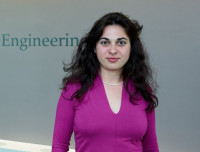Modeling & Pricing
Finance
Economics
Post-Doctoral Fellowships
Switzerland
Fast and accurate simulation of randomness
Transforming current methods to adjust it to real world applications »
Dr. Michaela Szölgyenyi’s project seeks to address two sets of issues regarding modelling of randomness : reliability and computation time. « When we want to know how processes are likely to behave in the future, not only do we need a method which is able to do the simulation, but we also need to know that we can trust the results and know what the error margin is », Dr. Michaela Szölgyenyi. « Another aspect is that we need to obtain these reliable results after a reasonable amount of time ». « For instance, current methods used to model the evolution of stock prices work on paper, but they require enormous amounts of computation time ». « People still use them but they get wrong results », she regrets. To address these shortfalls and develop more evolved models, Dr. Michaela Szölgyenyi and her mentor, Professor Arnulf Jentzen, are using a careful blend of existing ideas – ones that have not been applied to this issue in the past –, as well as a novel toolkit.
Dr. Michaela Szölgyenyi’s work will close a part of the gap in the academic literature in the field, and it will have a direct impact on many applications. The computability of solutions to these stochastic differential equations is indeed essential for performing simulation studies that help to understand the risks in the market and also to price these risks correctly.

Michaela
SZöLGYENYI
Institution
ETH Zürich
Institute for Atmospheric and Climate Science
Country
Switzerland
Nationality
Austrian
Related articles
Financial & Social Inclusion
Finance
Culture & Society
Joint Research Initiative
China
Understanding the Financial Lives of Low Income Households in China
Leveraging financial diaries research methodology, this joint initiative aims to provide actionable insights about the financial lives of low-income households... Read more

Xiugen
MO
Chinese Academy of Financial Inclusion
Modeling & Pricing
AXA Award
France
An Extreme Value Model For the Analysis of the COVID-19 Pandemic and Its Impact, and the Mitigation of Future Related Crises
The second strand of work will harness the vast wealth of functional data at our disposal to construct estimators for... Read more

Gilles
STUPFLER
